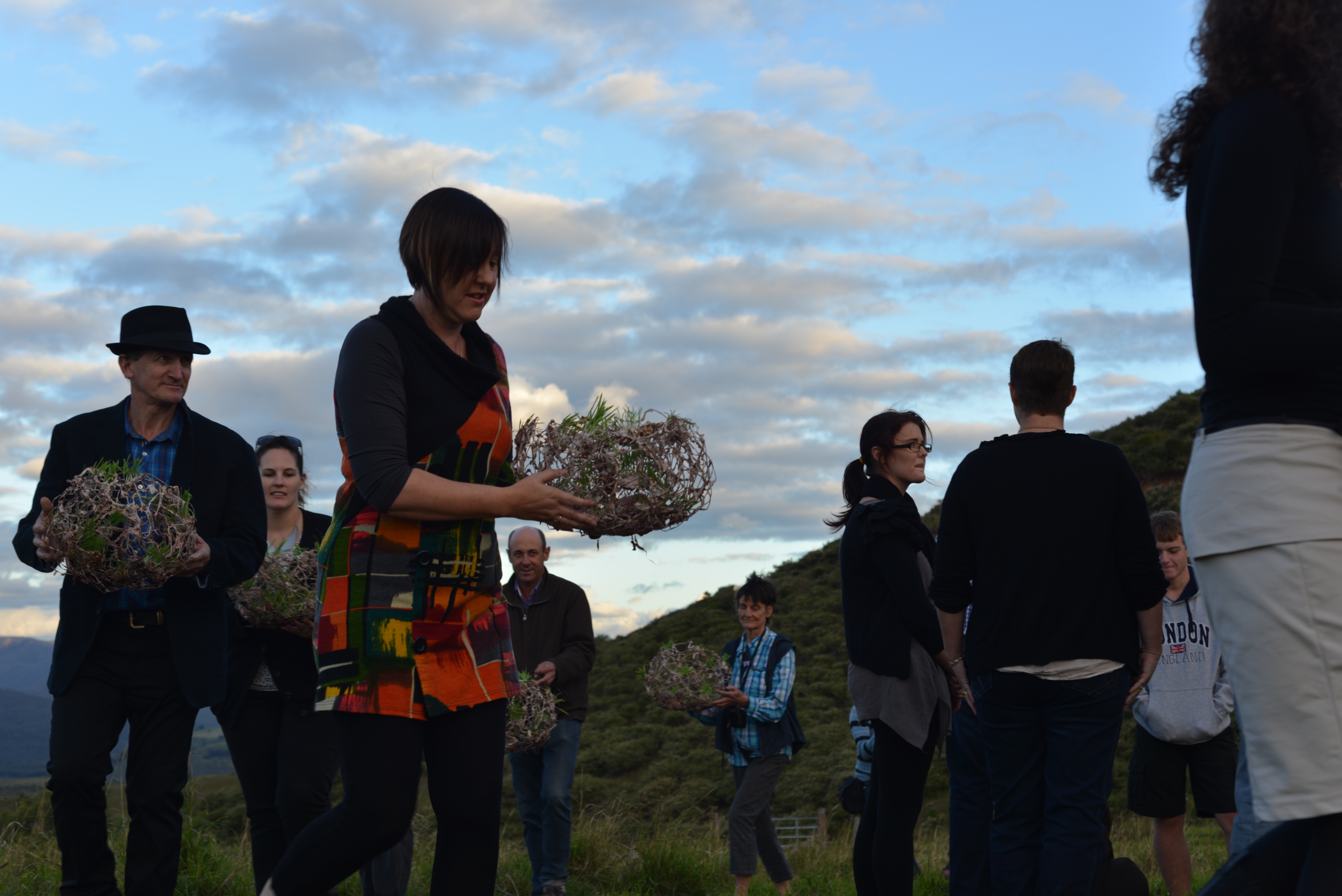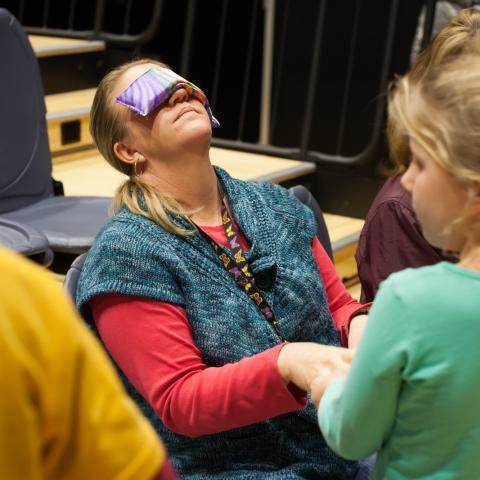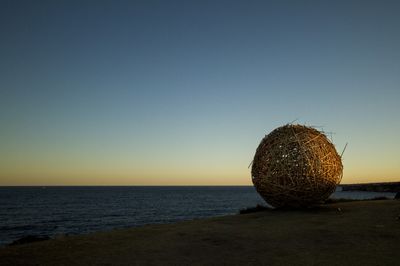Arts and Disaster Recovery: A closer look at Australia’s Creative Recovery Network

Following the publication of the 5th Green Guide on Australia in the series Creative Responses to Sustainability, author Claire Wilson takes a closer look at some of the organisations featured in the Guide.
Australian based Creative Recovery Network is one of the organisations featured in the Guide, and in this article we explore further some of the challenges involved in working in the arts and disaster recovery in the Australian context. If you would like to read about more examples like this one, you can download the Creative Responses to Sustainability Australia Guide.
With the effects of climate change it is predicted that countries will suffer from more natural disasters, and Australia is no exception given its dry climate and volatile tropical zones. Common disasters include floods, cyclones, bushfires and drought: in 2010 to 2011 Queensland experienced major flooding that affected at least 90 towns and in 2009 Victoria experienced the Black Saturday bushfires, to name just a few recent events.
Although there aren’t many arts organisations working exclusively in this field in Australia, there have been several short to medium term projects that address disaster recovery in the aftermath of disasters. As Victoria’s previous Emergency Services Commissioner Bruce Esplin observed in 2011, ‘In my experience, arts plays a critical, but hugely undervalued role, in this [disaster recovery] process. However, I don’t believe it is art as a spectator activity – it is the participation, the involvement in the creative process that makes the difference.’ An embedded artistic practice can be very influential when recovering from disaster but this is an area that can be fraught with challenges.

Recovery and the social infrastructure that keeps a community strong
The Creative Recovery Network is the only organisation in Australia dedicated exclusively to community disaster preparation and recovery supported by community arts and cultural development practices. It’s a member network and platform based in Queensland, but which works nationally and internationally. They work with communities in the development of high level and locally relevant projects and activities to build capacity and drive social change, collaborating with a range of actors, such as professional artists, cultural workers, community members, arts and non-arts organisations, community-based workers and humanitarian workers.
The organisation has 3 key principles: 1) first peoples first, 2) arts-led and 3) carbon neutral. Directed by these principles, they work across a range of disaster initiatives, from developing a framework for creative recovery practice to providing a platform for knowledge sharing or delivering training that supports artists, arts workers and community members who work creatively in communities affected by disasters.
The organisation developed from a pilot project in Queensland after the major 2011 floods. From this pilot they realised that although there were many robust projects being conducted in the area of disaster management and creative responses, there was no one place where all this experience was being recorded. This came at a time when there were several major disasters (such as the Black Saturday Fires in Victoria and floods in Western Australia) in which art workers and arts projects were involved in the recovery process. One such example was Arts Victoria’s Bushfire Recovery Initiative, which provided quick response funding for small arts projects during the early recovery phase after the Victorian bushfires. The total budget was AUD 100,000, allocated to artists in order to work in their communities on projects that contributed to the recovery effort.
As the Queensland Arts Minister Ian Walker explained in 2013, ‘Recovering from a flood, drought or a cyclone is not just about making sure the bricks and mortar are back in place – it is also the sense of community that enables people to rebuild their lives and be optimistic about their future – this is the social infrastructure that keeps a community strong.’ Artistic projects can play a vital role in helping to build this sense of community, but within the fast response and high pressure environment of disaster recovery, there is often not enough time to consider the ways in which the projects are implemented. This is where the Creative Recovery Network plays a key and ongoing role.
As Executive Officer of the Creative Recovery Network Scotia Monkivitch explains, ‘What we’re trying to do is become and grow into a connector across a lot of the regional peak bodies or arts organisations, and particularly independent artists who often get called in by organisations who get funding but don’t necessarily have a context and understanding of disasters and they get put in the middle of a pretty impactful scenario…what we’re trying to do is fill that gap and develop very strong and clear professional development for artists, and also some protocols and ways of working with arts organisations and with emergency management government and auxiliary services.’

First Peoples first
One of the core areas of the Creative Recovery Network’s work is to ensure that first people’s culture, arts and knowledge around caring for and healing the country guide their vision and processes. As Monkivitch emphasises, ‘we’re working with Indigenous elders and cultural workers from around Australia to try to look at building some protocols [around First People’s knowledges and culture] that we can feed into emergency management and have some form of deepening of the conversation around emergency management workers and their impact, particularly in regional and remote communities at the point of disaster.’ Putting the cultural vulnerabilities of communities at the heart of disaster management approaches is vital, but can be overlooked in such high pressure contexts.
The Joint evaluation of the international response to the Indian Ocean tsunami: Synthesis Report, conducted after the 2004 Indian Ocean tsunami, found that ‘the international community descends into crisis situations in enormous numbers and its activities too often leave the very communities we are there to help on the sidelines’ and that at times this aid undermined rather than strengthened local first responders. Placing local knowledge at the heart of disaster management protocols is a way to mitigate these oversights in fast, large-scale interventions.
Listening to an ecology of voices
The Creative Recovery Network is a connector across government bodies, arts organisations and individual artists, and they are very concerned that all these voices area heard in the disaster management context. Monkivitch clarifies that ‘we think of ourselves as an ecology that houses the artists at the centre; it’s very easy in these government relational processes for that to be buried, so we’re strongly trying to advocate for the voice of the artist.’
This advocacy role extends to the conversation between governance and civil society, where they help to explain the role of the artist in the disaster recovery process.
‘We’re working with each state and territory to set up an intergovernmental roundtable which we will facilitate, to advocate, educate and link those departments to the work of the artists on the ground. It’s a bridging process, so that within the preparedness space they get to understand the work and the potential of artists and their skill base.’
This development of mutual understanding can lead to the establishment of ‘protocols around activation and therefore funding initiatives, so there will be a greater ease for artists and a quicker response time for getting artists on the ground and working in their communities.’ Building these relationships and ways of working across governments takes time, but could in the long run enable a more sensitive and rapid responses at the time of disasters. It is important that cultural projects and processes are seen as a central component in the disaster recovery process.
Looking after the wellbeing of arts workers
Another significant area of work for Creative Recovery Network, which thus far has been under developed in the disaster management space, is around artists and self care. Monkivitch explains that ‘Artists are put into a position that social workers and healthcare workers and psychiatrists are placed in the recovery space but not necessarily trained in dealing with the complexities that disaster brings to communities.’
The Creative Recovery Network is developing training and professional development in this area, such as the training programme delivered in conjunction with the Red Cross. However, they are also working with the Australia Council to instigate strategies in the government around professional supervision in order to support arts workers in these difficult environments, in the same way that other health or social workers would be in a similar situation.
Artists and arts projects can contribute much to disaster management processes and can help the healing process within communities. However, the role of culture needs to be incorporated into every part of disaster management, including in the community preparation phase or in the development of government’s disaster management protocols. With the current environmental challenges set to worsen, more work in this area needs to be developed on an ongoing basis both before and after disaster events. The Creative Recovery Network is a unique organisation that brings together individuals, organisations and governments in order to share knowledge and build resilient communities with culture at the heart of the disaster recovery process.
If you want to read more about the Creative Recovery Network and other organisations working in sustainability and creative practice, download the Creative Responses to Sustainability Australia Guide.
Resources:
- Creative Recovery Network, Place Stories, a repository of projects on art and disaster management: http://m.placestories.com/creativerecovery/stories
- Fire Recovery Unit in the Department of Planning and Community Development, 2013, Victorian Bushfire Recovery Four Year Update, State of Victoria.
- Natalie Fisher and Annie Talvé, 2011, The Role of the Arts in Rebuilding Community: An Evaluation of Arts Victoria and Regional Arts Victoria’s Bushfire Initiatives, NSF Consulting
- John Telford and John Cosgrave, 2006, Joint evaluation of the international response to the Indian Ocean tsunami: Synthesis Report, Tsunami Evaluation Coalition.
- UNESCO, 2016, Global Report on Culture for Sustainable Urban Development, United Nations Educational, Scientific and Cultural Organization
- Victorian Bushfire Reconstruction and Recovery Authority, 2009, Rebuilding Together: A Statewide Plan for Bushfire Reconstruction and Recovery, State of Victoria.
Claire Rosslyn Wilson is a freelance cultural writer, researcher and poet, with particular interests in cultural diversity, experiences of place and creative expression for social change and has worked in Thailand, Singapore, Spain and Australia. She co-wrote ‘Freelancing in the Creative Industries’ (Oxford University Press, 2015), is the poetry editor for the human rights journal Right Now and a co-editor of the academic journal Coolabah, of the Transnational and Australian Studies Centre in the University of Barcelona.
Similar content
posted on
posted on
posted on
posted on
posted on
posted on



